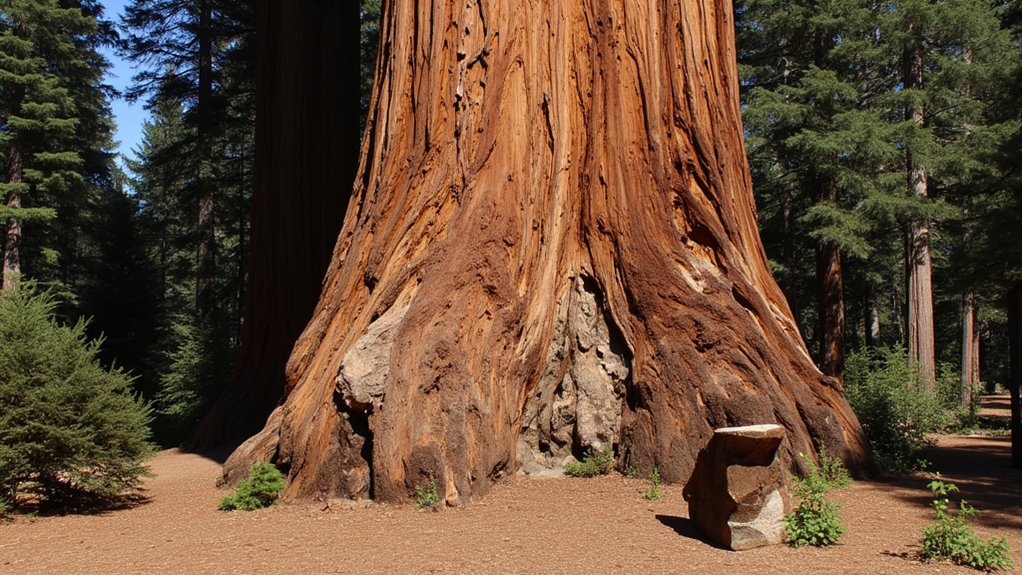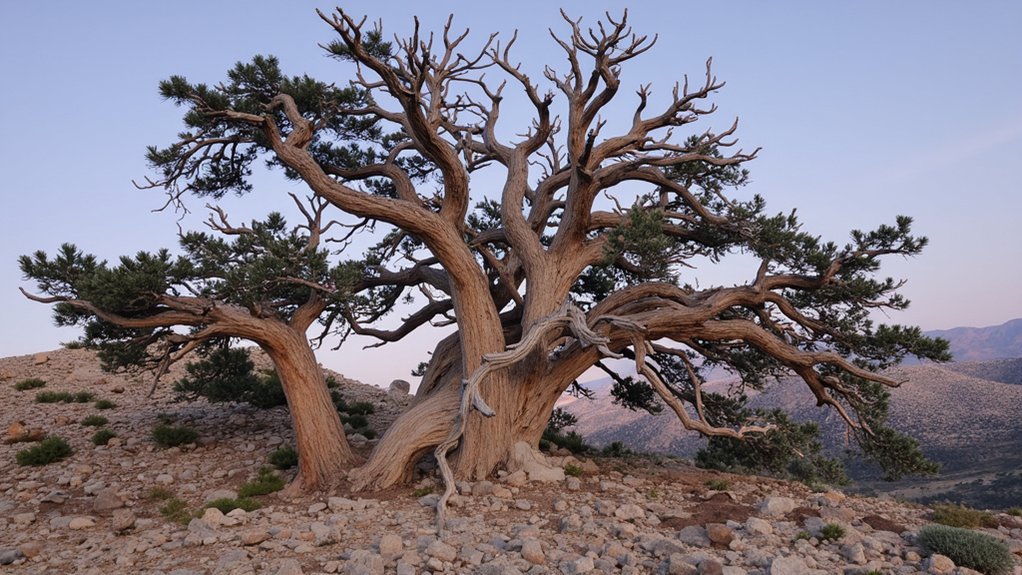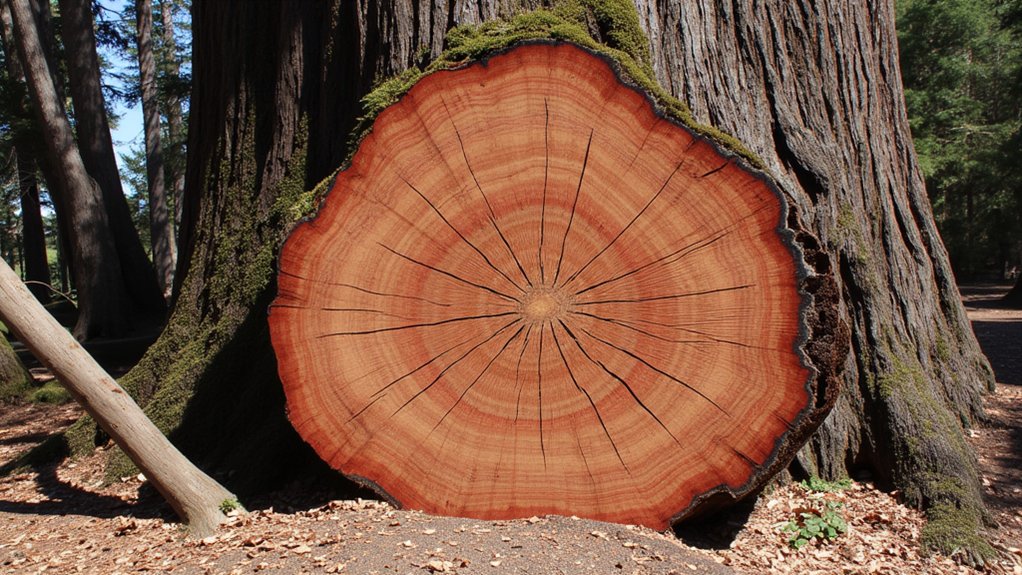You’ve probably heard tales of immortal trees, living for thousands of years without aging or dying. While it’s true that some trees, like the Great Basin Bristlecone Pine, can survive for over 5,000 years in harsh mountain conditions, the concept of eternal life in trees remains more myth than reality. To understand why these ancient giants aren’t truly immortal, you’ll need to explore the fascinating science behind their longevity, growth patterns, and ultimate mortality.
Contents
Understanding Tree Longevity: The Science Behind Ancient Giants

While most living organisms have relatively short lifespans, trees can persist for thousands of years through remarkable biological adaptations. You’ll find these ancient giants using specialized cells called meristems, which continually produce new growth and allow trees to regenerate damaged parts.
The secret to their longevity lies in their modular structure. Unlike animals, trees don’t have a central nervous system that can fail. Instead, they’re composed of independent segments, so when one section dies, the rest keeps growing. You’re fundamentally looking at organisms that can replace their parts indefinitely, much like a self-repairing machine.
The World’s Oldest Trees: From Bristlecone Pines to Clonal Colonies

When you explore Earth’s most ancient living organisms, you’ll discover trees that have witnessed thousands of years of history. Among these living legends, you’ll find the Great Basin Bristlecone Pine, with specimens like Methuselah reaching 4,853 years old.
But there’s more to tree age than individual trunks. Pando, a clonal colony of Quaking Aspen in Utah, shares a single root system that’s been growing for an estimated 80,000 years. You’ll also find Sweden’s Old Tjikko, a Norway Spruce that’s been regenerating itself through cloning for 9,558 years.
Natural Mechanisms of Tree Aging and Growth

These ancient trees don’t achieve their remarkable ages by accident. They’ve developed sophisticated mechanisms to repair damage, fight off diseases, and maintain structural integrity over centuries. A tree’s vascular cambium, the layer between bark and wood, continues producing new cells throughout its life.
You’ll find that trees don’t age like animals do. Instead of predetermined lifespans, they keep growing as long as conditions allow. Their cells don’t deteriorate with age; rather, external factors like disease, damage, or resource limitations typically determine longevity. Through compartmentalization, trees can seal off injured areas and continue growing healthy tissue indefinitely.
Environmental Factors That Impact Tree Lifespan
Although trees can potentially live for centuries, their survival depends heavily on specific environmental conditions. You’ll find that soil quality, water availability, and climate stability play essential roles in determining a tree’s lifespan.
Temperature extremes can stress trees beyond their tolerance levels, while drought conditions may cause irreversible cellular damage. If you’re examining old-growth forests, you’ll notice that trees growing in stable, protected environments often outlive those in areas prone to natural disasters.
Disease-causing organisms and insect infestations also impact longevity, especially when trees are weakened by pollution or poor soil conditions. Even hardy species can’t survive prolonged exposure to excessive urban pollutants or significant soil compaction.
The Reality of Tree Mortality: Debunking Eternal Life
Despite widespread misconceptions about immortal trees, every tree species has a natural biological limit to its lifespan. You’ll find that even the oldest known trees, like the 5,000-year-old bristlecone pines, will eventually succumb to death through cellular deterioration, disease, or environmental stress.
While trees can clone themselves through root sprouts or runners, creating what appears to be continuous life, the original tree still dies. Each individual stem has a finite existence. You can observe this process in aspen colonies, where new shoots emerge as older trunks decay and collapse, maintaining the illusion of immortality.
